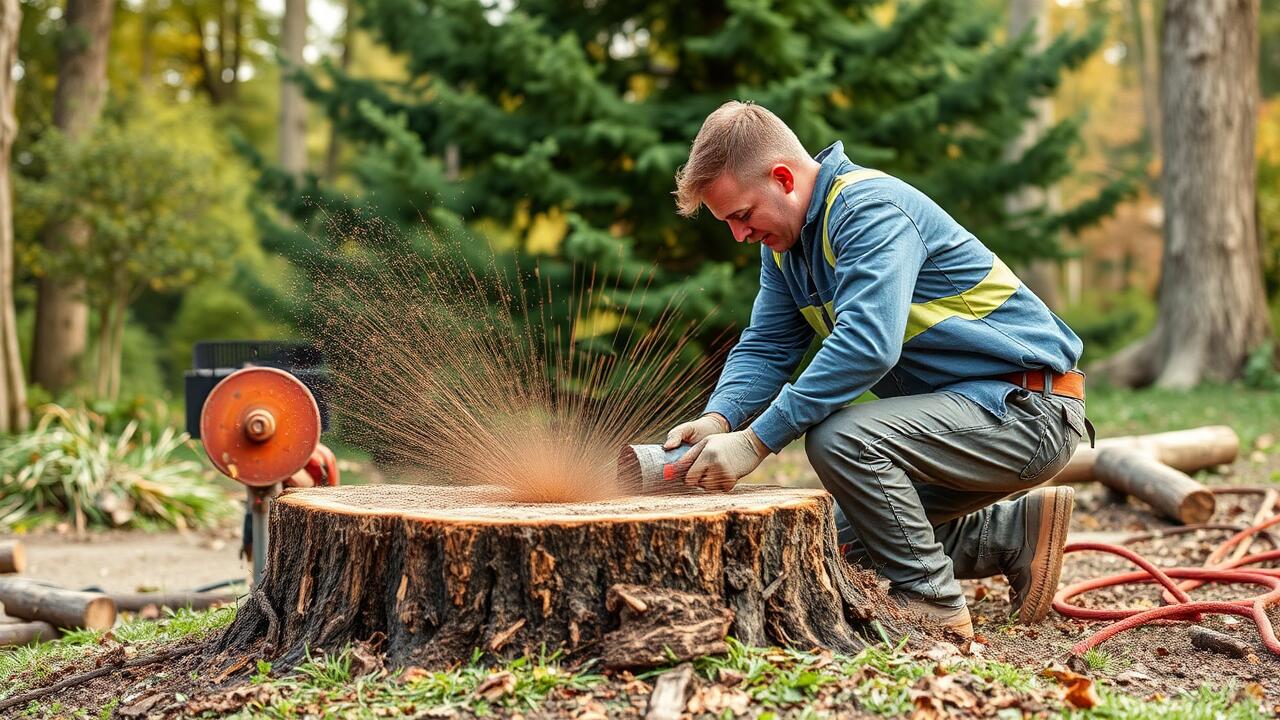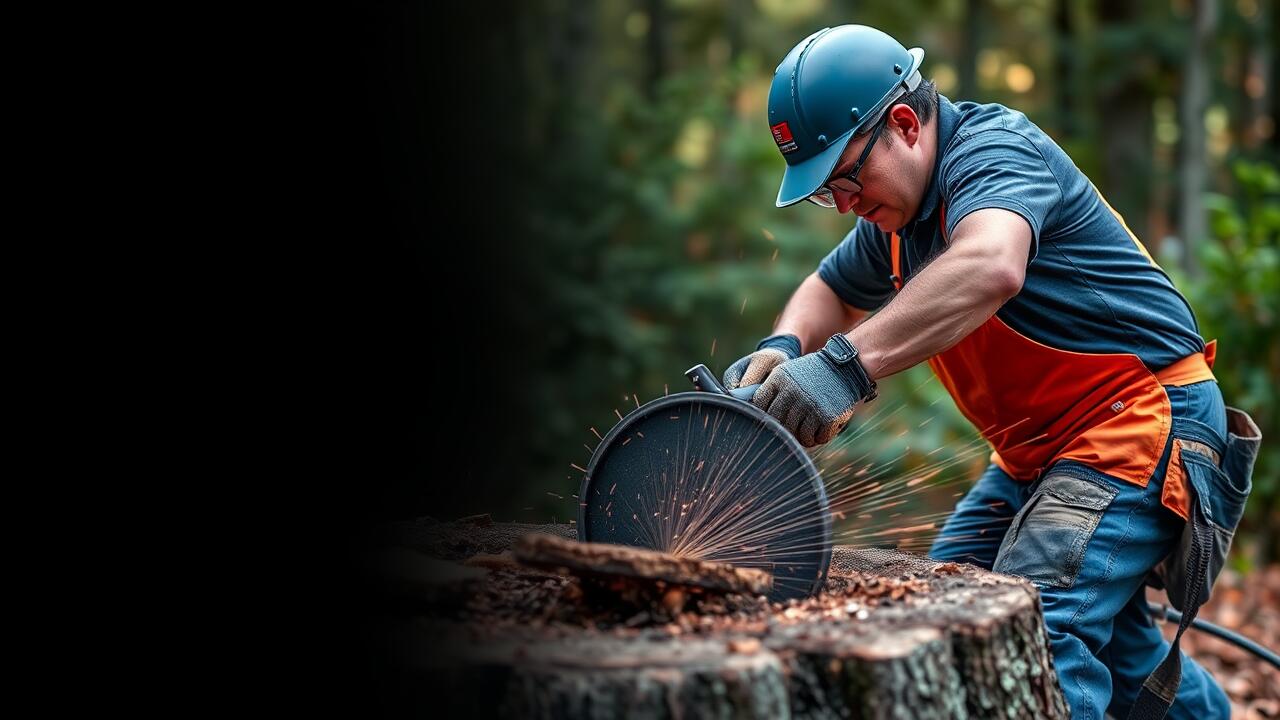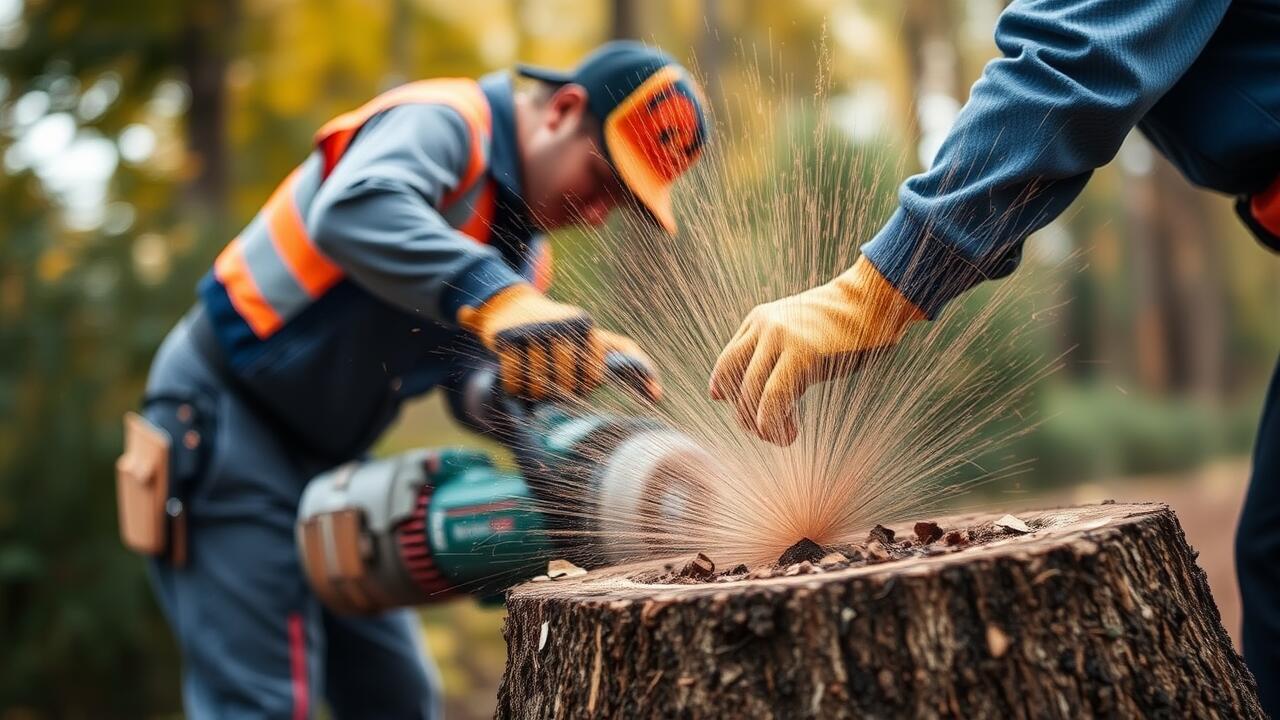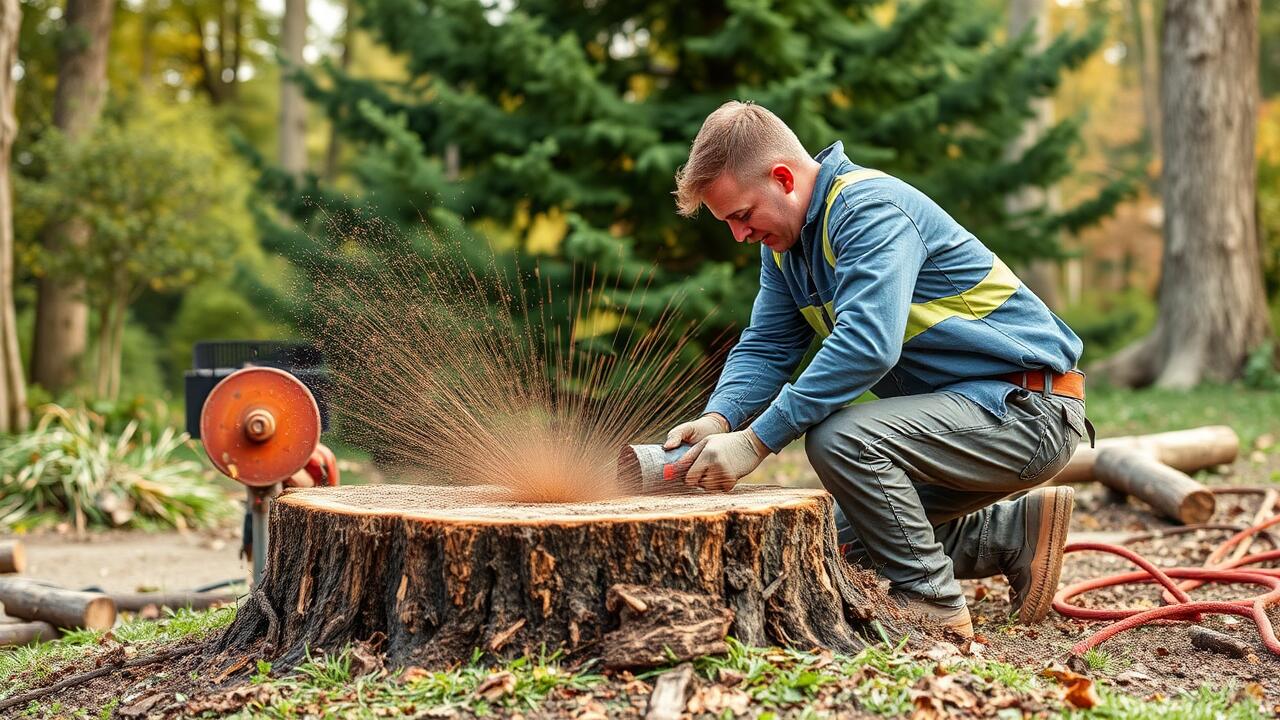
Environmental Impact of Stump Grinding
Stump grinding is often considered a more environmentally friendly option compared to complete stump removal. This method involves breaking down the stump into small wood chips, which can be left on site and used as mulch. The wood chips can enrich the soil as they decompose, providing nutrients to surrounding plants and promoting a healthier ecosystem. Additionally, this approach minimizes disruption to the surrounding landscape, causing less disturbance to the established root systems of nearby trees and plants.
When searching for "Stump Grinding near me," homeowners can contribute positively to soil health and reduce their carbon footprint. Unlike complete removal, stump grinding preserves the majority of the root system, allowing for continued decay and nutrient cycling. By opting for stump grinding, it’s possible to maintain a balance in the local environment while addressing the aesthetic and safety concerns associated with stumps. This method supports biodiversity, as the remaining nutrients can attract beneficial organisms and enhance plant growth in the area.
How Grinding Affects Soil Health
Stump grinding is often viewed as a more environmentally friendly option compared to complete stump removal. By grinding the stump down to mulch, it breaks down naturally over time, enriching the soil with organic matter. This process can also enhance the soil structure, making it more conducive to nutrient absorption and moisture retention. The fine wood chips left behind can serve as a natural barrier against erosion, while also providing habitat for beneficial microorganisms that improve soil health.
When searching for "Stump Grinding near me," homeowners often consider the impact on their landscape. Unlike complete removal, which can lead to soil compaction and disruption of the ecosystem, stump grinding minimizes disturbance. The remaining roots decompose gradually, fostering a balanced nutrient cycle that supports new growth. This method promotes a healthier environment for nearby plants and enhances the overall biodiversity of the area.
Environmental Impact of Stump Removal
Stump removal involves the complete extraction of the stump and its root system, which can significantly alter the surrounding ecosystem. When a stump is removed, the area can become exposed, making it more vulnerable to erosion. This loss of vegetation can decrease soil stability. Additionally, the void left behind may lead to changes in water drainage patterns, potentially affecting nearby flora and fauna.
Moreover, the process of stump removal can disturb the soil and disrupt existing plant life. Heavy machinery often gets used, which can compact the surrounding soil and hinder its natural aeration. This compaction negatively affects microbial activity, essential for nutrient cycling. Consequently, the overall health of the local ecosystem can suffer. Homeowners may look for "Stump Grinding near me" as a less invasive alternative to mitigate these effects while ensuring the growth of their landscape.
Consequences of Complete Stump Extraction
Complete stump extraction usually leaves a noticeable hole in the ground where the stump once stood. This excavation can disrupt the surrounding soil structure, leading to increased erosion and a higher risk of water runoff. The absence of the stump can change the local ecosystem, affecting existing plant life and wildlife habitats. New plantings may struggle to take hold without the natural nutrients that a decomposing stump would have provided.
Additionally, removing a stump often involves heavy machinery, which can compact the soil. This compaction limits aeration and ultimately affects root growth for nearby trees and shrubs. In contrast, opting for services like "Stump Grinding near me" can leave the underground roots in place, allowing for natural decay and less disruption to the surrounding environment. This approach often promotes healthier soil conditions for future planting and overall landscape stability.
Long-Term Effects on Your Landscape
The choice between stump grinding and removal can significantly influence your landscape over time. Stump grinding typically leaves the root system intact, allowing the surrounding soil to retain its structure and potentially facilitating continued growth of nearby plants. This method reduces the risk of large voids in your yard, which can lead to soil erosion and instability. Additionally, as the ground is leveled post-grinding, it often integrates better with the existing landscape.
In contrast, complete stump removal can lead to gaps in the ground that may affect drainage and the overall aesthetics of your yard. The excavated area might require extensive replanting or landscaping to restore its original look. While finding solutions for these voids can be manageable, it demands more resources. Exploring services for "Stump Grinding near me" can provide an efficient option that maintains your landscape’s integrity while simplifying future plant growth.
How Each Method Influences Future Growth
Stump grinding can positively influence future growth in the surrounding area. By breaking down the stump into small chips, the mulch produced can enrich the soil as it decomposes. The process leaves the roots intact, which may continue to provide stability and nutrients to nearby plants. Additionally, the new mulch can improve moisture retention, aiding in the growth of desirable plants or grass in that space.
In contrast, complete stump removal significantly alters the landscape. This method involves digging up the entire stump and roots, which can disturb the surrounding soil structure. The void left behind may prompt soil erosion or issues with drainage. The absence of organic material can create a nutrient deficit, complicating future planting efforts. Those considering how these methods may impact their gardens might often search for "Stump Grinding near me" to explore the benefits of the grinding option.
FAQS
Is stump grinding generally cheaper than stump removal?
Yes, stump grinding is typically cheaper than stump removal because it involves less labor and time, as the stump is ground down rather than completely excavated.
What are the environmental impacts of stump grinding compared to stump removal?
Stump grinding generally has a lower environmental impact as it leaves the root system intact, which can benefit soil health. In contrast, stump removal can disrupt the soil ecosystem and lead to erosion.
How does stump grinding affect soil health?
Stump grinding can improve soil health by enhancing the organic matter content as the ground-up stump decomposes, providing nutrients for surrounding plants.
What are the long-term effects of stump removal on my landscape?
Complete stump removal can create voids in the soil, potentially leading to erosion and affecting the stability of the surrounding area. It may also impact future growth by disrupting the root systems of nearby plants.
Can I plant new trees after stump grinding?
Yes, you can plant new trees after stump grinding, as the process leaves the soil relatively intact. However, it's important to allow the ground-up material to decompose and to ensure the area is properly prepared for new planting.



